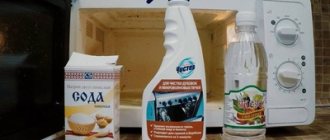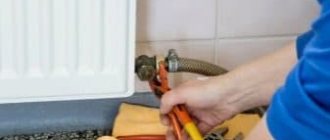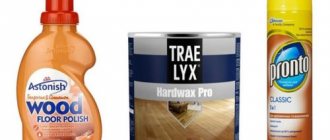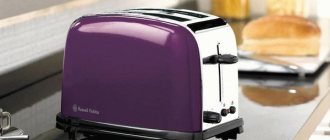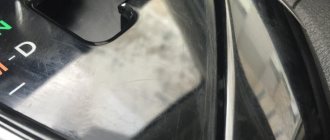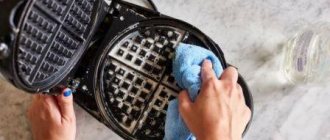Why is it dangerous?
The sizes of dust particles are determined within the range from 0.00002 to 0.1 millimeters.
Above forests, rivers, and lakes, its content does not exceed 1 milligram per cubic meter. In cities, dust levels can reach 20 milligrams per cubic meter. The structure of dust in an apartment/house primarily depends on finishing materials, service life and quality of furniture and household appliances. The most common harm caused by household dust is allergies, which affect every tenth city resident. It is often confused with the common cold due to the similarity of symptoms. Allergies can result in bronchial asthma.
Dust allergies are primarily caused by saprophytic mites, insects up to 0.5 millimeters in size. In 1 gram of house dust there are up to 500 individuals that process organic dust components. Their waste product is guanine, an allergen that causes runny nose, conjunctivitis and asthma. In a city apartment, a person inhales 25 times more dust particles per minute than outside the city. Cleanliness in the house for city residents is important for maintaining health.
Washing methods
There are two ways to clean the internal surface of batteries: mechanical and chemical.
p, blockquote 9,0,0,0,0 —>
Chemical cleaning methods include household cleaning products that have a chemical effect on contaminants. Such substances are:
p, blockquote 10,0,0,0,0 —>
- lemon acid;
- household chemicals containing caustic soda;
- means for cleaning car radiators.
All the substances described above clean well, for example, cast iron radiators, but with varying effectiveness.
Long brush with curved brush
Sometimes it’s worth spending money on comfortable cleaning and buying a special brush-brush for cleaning hard-to-reach places. This brush with a curved ring penetrates perfectly into the battery, eliminating any kind of contamination. The peculiarity of its use is that you can reach those places where your hand could not previously reach. In a store of various household items for the home, such a device may be called a bottle brush.
When choosing the most convenient and affordable method for yourself, you need to remember that the dirt and dust that accumulates in the radiator cells is harmful to the health of households and pets, and can cause allergies and other diseases. That is why you should not bypass such hard-to-reach areas.
Why do batteries get clogged?
As a rule, in a centralized heating system, due attention is not paid to the quality of the coolant poured into the pipes - the water contains many impurities. In addition, the pipes themselves inevitably rust from the inside, and a lot of rust accumulates especially if they are many years old. The movement of water inside the circuit occurs under high pressure, which leads to pieces of rust breaking off from the surface of the pipes and settling on the walls of the heating radiators.
As a result of various debris, rust and impurities from the coolant getting inside the batteries, the channels become clogged. This leads to a decrease in the amount of coolant circulating inside the radiator and a decrease in heating efficiency. Moreover, even the optimal temperature regime of the coolant will not provide high-quality heating of the room.
We use a steam generator
A steam generator will be a more modern alternative to a hairdryer and a rag. This equipment is ideal for cleaning old type radiators with many small cells. This universal device copes with any type of contaminant, while helping to disinfect radiators from the inside.
Before using the steam generator, it is necessary to place cloths under the battery to absorb water and moisture. If walls and floors need more reliable protection, then it is worth covering them with polyethylene or construction film. All that remains is to use the steam generator not exactly for its intended purpose, but according to the standard scheme!
Washing radiators outside
In addition to internal contaminants, heating radiators often contain dirt from the outside. This does not harm their main function - heating the room - as much as internal pollution, but it significantly spoils their appearance. In addition, things are often dried on radiators, so ideally radiators should be absolutely clean and free of dirt and dust on their surface.
Detecting this kind of pollution is very simple - they are visible to the naked eye. You should not put off external cleaning of batteries until later, because removing light and fresh dirt is much easier and faster than old dirt.
What you need to clean the outside of batteries
To clean the outside of radiators, you will need the following things:
- vacuum cleaner;
- a hair dryer, preferably with a narrow nozzle that allows you to produce a targeted narrow stream of hot air;
- soft brush for removing dust or pipidastra;
- foam sponges;
- soft rags that do not leave scratches on the painted surface;
- dish brushes;
- detergent.
Methods for cleaning batteries externally
In addition to internal cleaning, many people are interested in the question of how to wash radiators outside. Many housewives, when performing regular cleaning, neglect to wash the batteries, leaving dust and even dirt on them, which immediately reveals a careless attitude to order. Perfect cleanliness consists of small details like these. In addition, batteries should be especially clean if children live in the house.
You can clean the outer part of heating radiators using several methods: dry and wet, as well as using steam.
Dry cleaning method
The dry method is used when a layer of dust appears on the radiators, but there are no greasy or other contaminants, obvious stains or streaks. It is recommended to carry it out regularly once every 7-10 days. It is done quite simply:
- The main layer of dust is brushed off with a brush.
- A vacuum cleaner with a narrow nozzle attached to it removes dust from the rear, hard-to-reach surfaces of the radiator.
- A household hairdryer will help blow away dust even faster and more efficiently, especially helping with those areas that cannot be cleaned with a brush or vacuum cleaner.
- The radiator is wiped with a soft, dry cloth.
Cleaning batteries with steam
Close to the dry method in purpose, but cleaning batteries with steam is more effective. It also helps remove dust and light dirt. The best option in this case would be to use a steam generator. A directed flow of hot steam will help solve the following problems:
- Cleaning batteries from dust. The steam will remove its deposits, after which it will be enough to walk over the battery with a dry soft cloth. This device is able to remove all contaminants even from the most inaccessible areas.
- Dissolving small old stains. If there are small stains on the radiator, the steam will help dissolve them without washing with water and detergent.
- Disinfection. This is especially true if the battery is used to dry things.
It is worth noting that exposure to steam can damage the paint on the radiator, especially if it was applied in one or two layers and has not been updated for a long time. The method should be used with caution and not direct steam to one area for too long.
For steam cleaning, you can also use a clothes steamer if you don’t have a steam generator at home. However, it is less effective in this case, since the steam from it is supplied under much weaker pressure and less targeted.
Ways to quickly wash a battery
Let's take a closer look at what methods exist for washing cast iron, aluminum and bimetallic radiators.
Dry radiator cleaning
This method should be used at least once a year. As can be understood from the name, it consists in the fact that the heating device is cleaned superficially: from dust, cobwebs, crumbs and other light stains. The batteries inside are removed from debris using a broom, vacuum cleaner or dry cloth.
Wet cleaning of radiators
Carried out at least once every 2 years. This method will help get rid of greasy and stubborn stains. But before you start, you must do dry cleaning. Next, you will need to assess the degree of contamination: light, medium or severe. Because depending on this, you will be able to understand what auxiliary products and chemicals to use to quickly wash the batteries.
Tip #1
The cleanliness of the radiator must be constantly maintained, which will always allow you to quickly and easily clean its surface. At the same time, the device itself will last you much longer.
Tip #2
If there is a protective screen on the radiator, it must be removed before washing the cast iron or aluminum battery. The most effective way to clean the grill is to place it in the bathtub and wipe it thoroughly with a cloth soaked in soapy water. And then dry well with a clean cloth.
Tip #3
If the heating is turned off, it becomes possible to remove the radiator completely. Then you can soak it in a bathtub, having previously covered it with thick material to avoid damaging the enamel. Add detergents if necessary. Then the debris and dirt will come off much easier, you just need to rinse the sections with good water pressure.
Tip #4
When using wet cleaning, you should take care of the surrounding finish: wallpaper, laminate and parquet. Therefore, it is recommended to cover them with waterproof material. This could be oilcloth, film or an old unnecessary piece of linoleum.
Tip #5
The cast iron battery should be cleaned carefully. Since the surface of cast iron is uneven and has some defects that can injure your hands. It is better to clean with rubber gloves.
Tip #6
If the heating device has a completely unattractive appearance and cannot be washed, then all is not lost. Special acrylic paint will come to the rescue.
Tip #7
When using various chemicals or boiling water, you should think about the safety of your hand skin. Namely, wear thick rubber gloves.
Methods for cleaning walls from putty
In practice, to clean the wall from excess putty, you can use the two most relevant methods, namely:
- Mechanical cleaning with a spatula or knife.
- Using a chemical remover for processing.
Each individual case has its own technological process. In this case, everything should be done carefully so as not to damage the structure.
Important. It should be understood that depending on the wall coating, the appropriate cleaning option is selected.
Chemical remover
In practice, this option is used only for an even structure, since the use of a spatula or scraping knife is unacceptable here. This composition is poured onto the surface, after which the product is rubbed with a cloth with large pile.
Mechanical cleaning
This method is used in situations where there is an uneven structure and the impossibility of using a wash. Here you have to carefully scrape off the resulting excess until it is completely eliminated. For work, use a construction spatula or a stationery knife. Upon completion of work, grout should be done using polish or solvent.
Renovating one room in a residential apartment is perhaps the worst thing imaginable. But this is exactly what you often have to do. Already in the process of repair, no matter how hard you try to create less dust, dust lies in a thin layer everywhere, floating in the air. To minimize damage, try to keep the furniture covered with film or cloth at all times. They can then be washed/washed; cleaning furniture is more difficult. But the most tedious thing is to clean the floor after renovation, even if only dust has leaked into the rooms and there are no stains. No matter how much I wash it, it still appears again, again and again on the floor, with a white coating on all surfaces. We will tell you further how to solve the problem, how and with what to clean the floor after repair.
Seven ways to clean your battery from dust
- A vacuum cleaner with special narrow attachments is the fastest and most effective way to clean cast iron or steel radiators;
- Instead of a vacuum cleaner, you can use a steam generator, which not only cleans, but also disinfects. To do this, place rags under the radiator that absorb water well. Or, to protect the walls and floor, you can first lay or hang an oilcloth, and lay a rag on top. Then treat the heater with steam;
- Place a wet cloth on the wall behind the battery and use a hair dryer to blow the dust off the device. Then the dust will settle on the rag;
- You can wash the battery without using additional equipment. In this case, use manual cleaning and cotton gloves. Put gloves on your hands and soak them in a soapy solution, then use your hands to clean the dirt and dust from inside the device;
- You can clean the battery using boiling water. To do this, take a baking sheet from the oven, a kettle of boiling water and a bucket of rags. Place the baking sheet under the radiator, and start pouring boiling water over the device itself. During cleaning, you can additionally wipe the battery with a cloth. When working, use rubber gloves and be careful with boiling water! Water and dust will drain into the pan. And as the pan fills, pour the water into the bucket and put it back. After the procedure, thoroughly wipe the radiator with a damp and then a dry cloth, and remove any splashes around;
- Heavily dirty heating appliances can be washed using special cleaning products. Household chemicals effectively remove dirt, dust, grease and plaque. First, rags are placed under the battery, and then the spray is sprayed over the surface of the radiator and left for the time specified in the instructions. After this, wipe the battery with a sponge or cloth;
- To properly clean the inside of the battery, use a dish brush with a curved end, a long-handled radiator paint brush, or an old toothbrush. This way, you will reach hard-to-reach places, you will be able to completely wash the device, and effectively and permanently remove dust.
How to wash the inside of an accordion battery from dust at home
Accordion batteries are popular in new buildings and Soviet apartments. Heating a room quickly and cheaply is the task of this heating device. This heating sample is located near the window. Dust settles on it and remains for a long time in hard-to-reach places. Dirt accumulates between the ribs and the steel pipes, which are bent in a zigzag pattern. The removable panel on the battery does not help from this, as a result of which many people are interested in the question of how to wash the batteries. Cleaning and washing an accordion is not an easy task.
Algorithm for proper cleaning
Cleaning begins with putting things in their places. Items that are not regularly used are put away in cabinets, pantries, and shelves. Before removing or packing, dust must be removed from things:
- wipe;
- wash;
- vacuum;
- knock out.
To avoid mold, shoes, clothes, carpets, and soft toys should be dried, preferably in the sun. After tidying up the interior, you need to vacuum the floors so that dust does not rise into the air during cleaning.
Anti-dust treatment begins with textiles:
- curtains;
- curtains;
- bed linen;
- upholstered furniture;
- toys.
They are washed or treated with a steam generator.
Carpets and rugs are washed with foam and dirt is removed with a vacuum cleaner. The cleaning procedure can be carried out outdoors. It is easier to remove dust from dried products.
The next stage of cleaning is the most inconvenient. Need to wipe:
- corners and space between walls behind the refrigerator, cabinets, washing machine;
- ceiling;
- cornices;
- the top of the cabinets.
Whitewashed ceilings are brushed or vacuumed. Dust from the walls can be brushed off with a broom, sockets and switches are wiped, ventilation grilles are washed.
Then washed:
- doors (indoor and outdoor);
- pens;
- windows and window sills;
- chandeliers, sconces, table lamps;
- air conditioning filters;
- air conditioner;
- hood;
- mirrors;
- body of a refrigerator, washing machine.
Wipe clean using polishes or surface sprays:
- shelves (internal and external);
- furniture doors, walls;
- computer monitors;
- TV screens.
Leaves of indoor flowers are cleaned of dust. Give moisture-loving plants a shower. Before the final cleaning procedure, dirt is removed from under the beds. They vacuum again. The filters of the device are washed/replaced. All parts and surfaces of the vacuum cleaner are wiped. Wet cleaning is done throughout the entire room.
How to disassemble a new cast iron radiator
The easiest and fastest way is to dismount a relatively new battery. If the housing has not yet been installed in the heating system or has been used for a maximum of one season, then the chances of disassembling a section of a cast iron radiator without using cunning techniques and tools are quite high.
First of all, you will need to unscrew the plugs; they are usually located on the left side of the cast-iron battery case. You can disassemble the plugs with a regular coccyx wrench, provided that the length of the tool handle is at least 70 cm.
You can only turn it with a lever
To disassemble the sections, the plug will have to be removed without fail. Since the plugs always have a left-hand thread, you will have to unscrew them clockwise.
In order to dismantle the section, you will need to place the radiator on the side. Next we proceed in the following order:
- After removing the plugs, the first nipples will be visible through the holes;
- We turn both nipples counterclockwise;
- The top section lifts up and can be removed by hand.
It is more difficult to disassemble a cast iron battery that has served for at least one season. Due to the fact that cast iron parts stick to each other. For new sections, fabric or cotton cord soaked in brake fluid is wound under the plugs and at the connections. After a day, the radiator can be disassembled without much effort.
Cleaning from the inside
Batteries become dirty not only from the outside, but also from the inside: scale, rust, and mold settle on their walls. Basically, deposits of internal scale attach to the bottom of the battery, blocking the normal flow of water. Plaque inside reduces the flow of heat into the house.
How to clean deposits inside:
- Close the valves.
- Unscrew the nuts that secure the battery.
- Carefully drain the water.
- Remove the battery and take it out into the open, or at least into the bathtub (cover the enamel with a thick cloth).
- Using a wooden hammer, gently tap the entire battery to remove any adhering residue.
- Shake out any solids.
- Fill the tank with hot water for half an hour. To speed up the peeling of plaque, add a little citric acid or soda to the water. There are special washing solutions.
- Use a hose to rinse the inside of the battery. Continue until the water flowing out is completely clear.
Radiators should be flushed after the end or before the start of the heating season.
By paying attention to external and internal cleaning of heating radiators, you thereby extend their shelf life and improve the heat supply to the apartment. Even minimal effort will be useful
Basic methods
There are many ways to remove dust from a battery. You do not need to purchase any special tools; most devices are publicly available. Cleaning can be done using electrical appliances, improvised means, with or without the use of chemicals.
Electrical appliances
Thorough cleaning of the battery can be done using electrical appliances. It is important to take precautions.
Vacuum cleaner
You can use a vacuum cleaner for cleaning. It is advisable to use a narrow nozzle, this will allow you to penetrate hard-to-reach places. First you need to remove all dust and debris from the inside, then treat the outside. When finished, you can wipe the radiator with a damp cloth.
To use a hair dryer, you must first place a towel or any thick cloth soaked in water under the radiator. Direct a stream of hot air onto the radiator. The dust will move from the battery to the damp cloth. Not the most effective way: dirt can remain between the sections, get into the air or walls, floor.
Steam generator
A steam generator will do an excellent job of removing contamination (especially accordion-type radiators). To clean, you will need to direct a stream of hot steam to the radiator. Such heat treatment will not only effectively remove even old dirt, but will also disinfect the surface. Under pressure, steam penetrates into narrow, hard-to-reach parts. To protect surrounding surfaces from exposure to steam, you can cover them with cloth or oilcloth. It is also important to know that the high temperature of the steam can negatively affect the coating: damage the paint.
Washing vacuum cleaner
A good alternative to a regular vacuum cleaner. It will cope perfectly even with serious dirt. Cleaning should begin from the inside, and then proceed to the outer surface. A washing vacuum cleaner, thanks to an aqua filter, can prevent the spread of dust throughout the room.
Available means
You can thoroughly clean the inside of the battery from dust using improvised means that are found in every home. The most popular means are presented below.
Work order
Before you begin directly removing dirt, you need to remove the protective screen, if any. The grate must be washed by placing it in a bathtub using warm running water. After the procedure, you need to wipe it dry with a dry piece of soft cloth. If there are significant stains, a soap solution will help remove them.
Using a vacuum cleaner
Dust that has accumulated between the body parts can be easily removed with a vacuum cleaner. To do this, you need to use a narrow nozzle, since with their help you can remove even the most inaccessible places.
Using a hair dryer
This method of dust removal is also effective. To do this, place a wet cloth on the wall located behind the radiator. This could be a diaper or an old pillowcase. To prevent dust and dirt from remaining on the wall, cover it with film and then attach the fabric. After this, you need to thoroughly blow the entire battery with air from a hair dryer. This will help blow away dirt and dust, which will then settle on the wet cloth. This cleaning method is suitable for frequent use, especially if the radiator does not have stubborn stains. The time required for this type of cleaning is about 10 minutes.
Using boiling water
This method is suitable for cleaning the radiator from significant stains. To do this you will need a wide baking tray, a kettle of boiling water and a rag. The container in which the water will be collected must be placed under the device, and the wall located behind it must be covered with film.
Next, you should very carefully pour boiling water over the battery. It will help wash away dirt that drains into the container.
Preparing to clean the batteries internally
Washing batteries yourself at home requires some preparation:
- Most often, washing occurs in the bathroom. To protect the enamel coating from possible scratches, you should place a tray on the bottom of the bathtub or cover it with a rag; it is also better to cover the walls with a layer of unnecessary fabric. Otherwise, there is a risk of damaging the bathtub coating when washing part of the radiator in it.
- Then you should turn off the water supply valves, unscrew the fastening nuts, and disconnect the radiator. It is worth preparing a container in advance into which the water will be drained (it may remain in the battery).
- Prepare the means at hand that you will use for cleaning.
Battery cleaning brushes and sponges
To remove old stains, the following will help:
- A toothbrush, brush or narrow paint brush with stiff bristles. They are able to crawl into the most remote corners of the radiator.
- Sponge. If you attach it to a long ruler, it can also clean hard-to-reach places.
- Rubber glove. You need to put it on your hand and wash it well with laundry soap. Then rub off stubborn stains on the heater using your fingers. Can be replaced with old cut-off tights or socks.
- Dishwashing brush. Use this brush to clean the battery. They are sold in hardware stores and have a comfortable long handle.
- Spray. In order to wash the inside of old batteries, you need to add detergent to the spray bottle and spray the dirt. Wait a while and wipe the soaked areas with a damp cloth.
Handy tools used when cleaning the battery
These simple items are sure to be found in every home. Their use will significantly speed up and facilitate the process of cleaning the battery from the most difficult contaminants:
- Ershik. This tool makes it easy to clean the holes in the radiator. To prevent splashing from the brush, you can wrap it in a rag.
- Brush. For a multi-row device, with gaps between the plates of 2 cm, a small brush will do.
Additionally, using a spray bottle, you can deal with such contamination in an hour.
- Sock. An old sock is an alternative way to wash hard-to-reach areas. Take a sock, put it on your hand, and dip it in the washing solution. In winter, when the heating season is open, in order to avoid getting burned, old mittens are suitable, or a sock is put on a rubber glove.
- Microfiber cloth on the palm or cloth gloves.
- Old toothbrush and rag.
Cleaning products
To clean the battery, you can use special chemicals or get by with natural substances, which are sure to be found in the arsenal of any housewife. Using these products will significantly reduce cleaning time and save your energy.
Natural remedies:
- Lemon acid. 3 teaspoons per two hundred gram glass is enough to wipe dusty areas with this solution.
- Hydrogen peroxide. Its bactericidal properties will cope with pathogens that have accumulated on the radiator.
- Vinegar will help deal with unpleasant odors in the house. Undiluted distilled vinegar will remove mold from your heating system. A solution of a liter of water and two hundred grams of vinegar will make the surface shiny.
- Baking soda copes with heavy stains not only on dishes, but also on the radiator. Soda diluted in water removes contaminants in hard-to-reach places of the heating device. Soda can be diluted with apple cider vinegar and a soap solution - the result will be more effective.
- Chalk diluted in water.
Chemicals:
- Oxygen bleach: Vanish or DeLaMarc.
- Liquid and powdered anti-greasy agents: Pemolux, Proper, Comet. Vanish, Kalgin, Tiret, Silit, Sorti, Fairy, Stichonite, Domestos. There is a huge selection of universal cleaning products.
- Powders. The powder is diluted in clean water, the battery is wiped with a soft cloth.
- Soap. Soapy water works well to remove dirt in hard-to-reach places.
Chemicals are also often actively used to clean cast iron pipes before painting. To prevent rust, you can use products that prevent its occurrence.
It is important to avoid using products containing chlorine and phosphates. These substances are harmful to the body
General cleaning of radiators
General cleaning should be carried out in every corner of the house. Radiators cannot be ignored either. In order for the cleaning to be complete, it is necessary to first remove the liquid from the heating system and dismantle the radiator. The radiator should be washed using household or specialized cleaning products. Cleaning can be done at home, in the bathroom.
To avoid damage to the enamel of the bathroom, it is necessary to lay a cloth on the bottom and install a mesh in the drain hole to avoid the penetration of large pieces of debris into the sewer.
Remove all plugs from cast iron batteries and fill the insides with hot water. During the first flushing, it is recommended to shake the radiator and drain the water and debris. For further washings, special detergents can be added to the water. It is better to leave the radiator with a mixture of water and household chemicals for an hour. Flushing is carried out until the water becomes clear, free of debris, dirt, and rust.
Don’t know how and how to clean radiators? Read!
If the radiator becomes cold during the heating season, then it is necessary to flush it, since during operation, debris has accumulated in it and the coolant has stopped circulating through the system. But before we find out how to clean radiators, let’s figure out why a cast iron radiator gets clogged.
How and what does a heating device become clogged with?
Since the quality of the circulating fluid sometimes changes, this leads to mechanical particles settling in the heating system, which move along with the coolant. And after the season, the water is drained, and corrosion occurs in the pipes.
When hot water is supplied, since it is under a certain pressure, corrosion particles peel off and also settle inside the radiator. And over the years, so much of this garbage accumulates that, circulating along with the coolant, it clogs the heating battery. All this leads to the fact that the device stops working efficiently, and even with a hot riser, the radiators remain warm, and this is the first signal that the battery needs to be cleaned.
Advice from experts
If you do not have the skill to work with wrenches, then you should not wash the heating device yourself. Let's look at how to clean a heating battery correctly.
For this:
- In places where there is a surge on the radiator (top and bottom), unscrew the lock nut;
- Hold the coupling with one key, and screw the squeegee into the heating battery with the other. This is done until he comes out;
- Free the radiator from the pipes and remove it from the holders;
- The battery is mechanically cleaned of debris and deposits, but if this does not work, then various chemicals are used to remove scale;
- After the inside of the radiator is cleared of debris, it is blown out with compressed air;
- If the battery is aluminum, then hydrodynamic flushing is necessary;
- After cleaning, the heating device is mounted back in its place. To do this, hang it on brackets. Unscrew the fittings and clean the threads from the seals. A cable or sealing tape is wound around the long thread and screwed into the radiator. Before this, screw the locknut to the end of the thread. The same action is performed with the second drive;
- Simultaneously with unscrewing the squeegee, screw it into the tap or coupling, and there should be a seal at its end;
- Also, a sealant is wound in front of the locknut.
A few tips on how to flush radiators
It is important! Let's look at ways to clean cast iron heating appliances; this work is not difficult. You can flush the radiator using soda ash, whey, vinegar essence and other preparations.
Basic steps when flushing the battery:
- Dismantle the radiator;
- Soda is poured into hot water and poured into the heating system;
- The plugs are screwed in at both ends of the battery;
- After some time (1 hour), the radiator is shaken, and in order for the rust to come off, the body is tapped with a wooden hammer;
- Open the plugs and connect the hose and open the tap, and the pressure must be high so that all the rust comes out;
- In order to create high pressure, you can use a compressor.
Cleaning with liquid for a car radiator
- Read her instructions and accordingly give her the required dosage;
- This product is poured into the radiator and filled with hot water, but not completely;
- At intervals of 10 minutes, the heater is turned (within two hours);
- After this, the battery is washed under high pressure of water until the corrosion particles completely disappear.
How to clean a radiator with whey?
- It is poured into the battery and, just as when using soda ash, the system is turned and tapped, as the serum should be shaken;
- This substance contains an acid that eats away rust and cleans the heating device.
Conclusion
The article discusses how to clean a cast-iron heating radiator, but to avoid having to do this, you can make a small outlet with a plug and attach magnets to it, which will attract rust.
And to remove corrosion particles, you need to open the plug and remove the residue.
ActionTeaser.ru - teaser advertising
Cleaning cast iron radiators is not a problem
Rinse the cast iron heating radiator, as it is heavy, which in itself is inconvenient. In addition, due to the design features, it silts heavily.
To remove a cast iron battery you will have to work hard - as a rule, the connecting couplings and taps are rusted, so it will be difficult to unscrew them. Start by draining off any remaining water. To do this, unscrew the plug at the top, place a basin or other container under the bottom and begin to unscrew it easily.
Important!!! On cast iron radiators, the plugs can be with either left-handed or right-handed threads. If the plugs are painted, use solvent or White Spirit to remove the paint from where it connects to the section
After that, try to unscrew it with a gas wrench. If it does not flow, use a rust converter, for example, WD-40
If the plugs are painted, use solvent or White Spirit to remove the paint from where it connects to the section. After that, try to unscrew it with a gas wrench. If it does not flow, use a rust converter, for example, WD-40.
When the remaining water has been drained, it is necessary to disconnect the cast iron radiator from the common line. Usually it is mounted on special couplings (see photo). As with plugs, couplings can also become rusty. Instead of couplings, valves, taps or fittings can be installed. In this case, you will need to unscrew them.
Such couplings usually connect pipes in heating systems with cast iron radiators.
It is best to wash a cast iron battery in a bathtub, which must be completely covered with rags or rags so as not to damage the enamel coating or acrylic.
First, clean the bottom and top using rags. You may need something like a metal rod to remove any stubborn dirt, especially at the bottom.
After this is done, you need to tighten the plugs at the bottom of the cast iron radiator and pour liquid or flushing solution into it. Let it sit for as long as required by the rules of use, then drain it by unscrewing the bottom plug.
Screw the cap back on at the bottom and fill all sections with hot water. Let it sit for 3-5 minutes and drain. Repeat the procedure until the water coming out is as clean as the water coming in.
The level of contamination of cast iron radiators is higher than bimetallic and aluminum ones. Therefore, repeat the cleaning procedure again. You may have to do this 3-4 times.
Battery flushing
It is most convenient to wash batteries in large containers. Considering the low weight of the products, the best option would be to process the equipment in a bath. The first cleaning is carried out without the use of chemicals. The radiator is filled with water and dirt is mechanically removed from it using shaking.
The spent contents of the device should be poured out, and special reagents should be poured in its place. The solution is kept inside the battery for about an hour, after which the equipment is knocked with a wooden hammer or shaken to remove any remaining rust and dirt. At the end, the device is rinsed in running water.
How to clean a radiator from dust
Heating radiators very quickly accumulate dirt and dust, especially inside. This disrupts the aesthetics of the room, interferes with the proper operation of the heating device and reduces the efficiency of heat transfer, causing corrosion, grease and salt deposits.
In addition, dust negatively affects human well-being and often causes an allergic reaction.
Regular battery cleaning is the key to human health and excellent preventive maintenance of heating devices. However, while removing dust from the outside of the radiator is quite easy, cleaning the inside causes a lot of hassle and problems. Let's find out how to quickly and effectively clean the inside of radiators from dust. And let's look at how to properly clean radiators.
Seven ways to clean your battery from dust
- A vacuum cleaner with special narrow attachments is the fastest and most effective way to clean cast iron or steel radiators;
- Instead of a vacuum cleaner, you can use a steam generator, which not only cleans, but also disinfects. To do this, place rags under the radiator that absorb water well. Or, to protect the walls and floor, you can first lay or hang an oilcloth, and lay a rag on top. Then treat the heater with steam;
- Place a wet cloth on the wall behind the battery and use a hair dryer to blow the dust off the device. Then the dust will settle on the rag;
- You can wash the battery without using additional equipment. In this case, use manual cleaning and cotton gloves. Put gloves on your hands and soak them in a soapy solution, then use your hands to clean the dirt and dust from inside the device;
- You can clean the battery using boiling water. To do this, take a baking sheet from the oven, a kettle of boiling water and a bucket of rags. Place the baking sheet under the radiator, and start pouring boiling water over the device itself. During cleaning, you can additionally wipe the battery with a cloth. When working, use rubber gloves and be careful with boiling water! Water and dust will drain into the pan. And as the pan fills, pour the water into the bucket and put it back. After the procedure, thoroughly wipe the radiator with a damp and then a dry cloth, and remove any splashes around;
- Heavily dirty heating appliances can be washed using special cleaning products. Household chemicals effectively remove dirt, dust, grease and plaque. First, rags are placed under the battery, and then the spray is sprayed over the surface of the radiator and left for the time specified in the instructions. After this, wipe the battery with a sponge or cloth;
- To properly clean the inside of the battery, use a dish brush with a curved end, a long-handled radiator paint brush, or an old toothbrush. This way, you will reach hard-to-reach places, you will be able to completely wash the device, and effectively and permanently remove dust.
How to remove and wash the battery from the inside
For general cleaning, experts recommend removing the battery and taking it out of the room, as this procedure causes a large amount of dirt and debris to appear. Cleaning is done outside or in the bathroom, after covering the bathtub with a thick cloth so as not to damage the enamel of the plumbing fixtures.
By the way, read here how you can restore the enamel of a bathtub. A protective mesh is inserted into the drain hole to catch solid particles and prevent clogging of the pipeline.
Before starting the process, be sure to turn off the valves and unscrew the nuts that attach the radiator to the heating network pipes
Then you should carefully drain the remaining water, remove the battery from its mounts and place it in the bathroom
Wash the device using a shower or hose.
To clean a radiator, take a mallet, hammer or wooden block and tap each section thoroughly. This will speed up the removal of rust and salt deposits. Then tilt the appliance on its side and shake it to release large solids from inside.
After this, pour hot water inside the radiator and leave for half an hour. After the time has passed, rinse using a shower or hose. Flush the battery until the water coming out from inside is clear.
Most often, batteries are not cleaned inside for several decades. Therefore, washing with ordinary water may not cope with contaminants. In this case, you can use additional funds.
So, soda, citric acid or acid-base compounds are added to the washing water. Before using special detergents, carefully read the instructions, as some have a negative effect on aluminum and are not suitable for aluminum batteries!
Handy cleaning products
The means at hand will help you get to the most remote nooks and crannies between the battery sections.
- Sprayer or country sprayer. Place a rag or a small container under the heating radiator to prevent the liquid from dripping onto the floor. Dissolve a few drops of dishwashing detergent in water and spray onto dirt. Leave to soak. Then use a sponge or rag to wash off the softened plaque.
- Window painting brushes with long handles and curled bristles and pipe cleaners. Or wrap a thin strip or ruler at least 15 cm long with a cloth soaked in a cleaning solution.
- Toothbrushes are suitable for cleaning heavy stains.
- You can remove accumulated grease on kitchen cast iron radiators using boiling water. Place a small tray and cover the finishing materials around with film or a rag. Pour hot water from the kettle over the battery from top to bottom. The dust along with it falls into the pan, which we drain into a bucket brought in advance. After treating with boiling water, simply wipe the radiator with a dry cloth.
- You can water the battery from top to bottom and from a hose connected to a hot water tap. But in this case, it is better to place a larger container under the battery, and have a bucket with good capacity nearby. When working with boiling water, you need to be extremely careful so as not to scald your feet or burn your hands. For convenience, you can work in special mittens or use oven mitts.
- The foam sponge can be cut in half so that there is a hole inside, and a ruler or any wide strip can be inserted into the resulting cut.
Cleaning correctly is important!
Dust repellents only help when used correctly. First of all, you need to learn how to clean consistently.
How to wipe off dust correctly?
- You should move from top to bottom. First you need to wipe the chandeliers, baguettes, cabinets, and then the furniture and floor. If you do the opposite, dust from the upper tiers will fall down and cover already processed objects.
- You need to use a slightly damp cloth - this will collect dust most effectively. If you wipe it with a wet cloth, streaks will remain; if you use a dry cloth, dust particles will scatter throughout the room.
- Before wet cleaning, dry cleaning is carried out. You must first sweep the floor, vacuum the carpets and furniture. Then there will be fewer suspended particles in the air, and surfaces can be wiped clean.
Rules of care and use
Regular cleaning of all elements will help preserve heating batteries for a long time. The radiator should be cleaned once per heating season, and the outer surface of the battery should be wiped regularly. It is recommended to do wet cleaning of surfaces every time you clean a room, because dust actively accumulates between the walls of the radiator, gets eaten, and actively spreads throughout the room, causing allergic reactions. When choosing a radiator cleaner, you should carefully read the instructions, apply the necessary precautions, and select the active substance based on the material of the product.
Heating radiators are an important part of the room, the cleanliness of which determines the quality of the air, as well as the quality of heating during the cold period.
Source
Efficient devices and special equipment
Special cleaning supplies and household appliances help combat dust in your apartment. Let's list the most effective ones:
- Wipes with antistatic effect. First of all, they are designed to eliminate dust and static electricity from screens and various types of equipment. But they can also be used to wipe cabinets, shelves, mirrors and other surfaces.
- Microfiber cloths. It is best to collect dust and prevent it from flying around the room.
- Vacuum cleaner. A universal device for dust control. Devices with various attachments, washing devices, and a steam generator help eliminate it especially effectively. They are able to clean hard-to-reach places, deep layers of fabric, upholstered furniture, carpets, toys.
- Washers and air purifiers. Devices designed to filter air also collect dust. They trap harmful particles inside themselves, as a result of which you have to clean the apartment less often. Some varieties even have a dust sensor, in particular Xiaomi Mi Air Purifier 2.
Chemical and traditional methods
To increase cleaning efficiency, detergents can be added to the water. Before use, you must make sure that the composition does not contain substances contraindicated for treating specific surfaces. Some substances can damage the metal surface. We should not forget about the harmfulness of some components to the human body, for example, phosphate and chlorine. When working with such substances, it is important to use respiratory and skin protection.
Cast iron heating radiators, and which ones are better
Of course, modern radiators have a peculiar beauty and practicality. Only their use is not adapted to our heat supply systems. Therefore, until centralized heating systems are improved, it is better not to install new radiators made of plastic materials. Cast iron heating radiators, and it’s up to you to decide which is better - new or old model. If the equipment is changed in your home, where water without chemicals is poured in and its temperature is maintained at a certain temperature, then the original versions (not Chinese) will last no less than indicated in the instructions for use.
How to remove, disassemble and clean an old battery
Reanimation of an old cast-iron battery is perhaps the most difficult stage of work. Its difficulty lies in the fact that over many years of use of the product, all its connections become so stuck and rusty that it is impossible to disassemble them with keys. Neither human strength nor the strength of tools is sufficient. Here you need to act subtly and thoughtfully.
- How to remove the old battery? There is no point in fiddling with the bends - this is unnecessary work, which can be avoided with the help of a circular saw. Simply put, the battery is cut off along with pieces of pipes that will somehow have to be cut in the process of replacing the old battery with a new one. Everything is simple here, but further on it will be difficult.
- How to unscrew the foot nuts? In principle, the recipe is simple - if you don’t succeed in tearing them off the first time (by the way, it’s better to try to do this while the battery is hanging on the brackets), then they need to be warmed up. Either with a blowtorch, or by placing it on the burner of a gas stove - if you have an autogen, then this is generally an ideal option. By the way, about knocking on the nuts. It is better not to do this, since cast iron is a very fragile material. The situation is aggravated by the age of the metal - the combination of these two factors and an incorrect impact can lead to a crack in the battery. So heat and heat again - when heated, the metal expands, the tow and paint in the threaded connection burn out and everything comes out very easily.
How to clean an old battery photo
All! The battery is ready for reuse - all that remains is to restore it to its proper appearance. The easiest option to remove old paint from it is a mechanical method - simply put, it needs to be peeled off using a special cutter mounted on a drill. Alternatively, burn it out with a blowtorch or just in a large fire. Naturally, then you will have to remove carbon deposits from it, thoroughly treat it with phosphoric acid to prevent it from rusting, cover it with a primer and paint it. And then it’s up to your discretion - you want a heater, you want it back into the system, or you want it for sale.
To conclude the topic of what to do with old batteries, I’ll also tell you that you will always have time to throw the product in a landfill or sell it for scrap metal, and besides, this is the easiest way. Another thing is to give the battery a second chance and save the lion's share of the family budget - here you already need to try. But you shouldn’t expect that it will be easy - in fact, this is a very labor-intensive process, which not every person will bother with.
